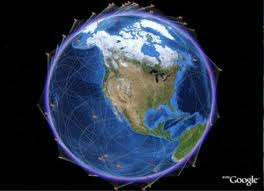Google is going to track vessels at sea
Google has got plans to mark the whole ocean floor in the next 5 years. The browser has spent 3 million dollars on technology and claims based on satellite tracking, which is quite better at live vessel tracking than most governments.
Google has paid 3 million dollars for this technology to determine the exact vessel locations. The executives of the browser has told to representatives of more than 40 naval forces all over the world about the new satellite technology and has stated it may track vessels much better than their own commanders can. During none of those facts makes Google a smart agency, it necessarily emphasizes a trend of huge interest to the cleverness society and the military.
Google Satellite vessel tracking of the marine traffic
The entrance to information from the based in the space and airborne commercial remote tracking form has become comparatively nationwide; GPS is nationwide and the Europeans and Chinese are also starting their own Positioning, Navigation and Timing-PNTsoftware systems.
This statement by Google according to vessel tracking and collecting of bathymetric information, along with the current discussion of the possibility of circulation of unmanned antenna software systems in the skies all over the US is the natural stretching of the transparency that society has seen coming for many years.
Like its arising project to map the ocean floor, this new satellite technology for vessel tracking on the surface gets an advantage of prior investments by others.
In that case, it is the marine Automatic Identification System, better known as AIS, which is a system of mounted transponders in all lawful seagoing ships that periodically send their position to evade collisions even when the crew members can not physically look at each other due to darkness or heavy weather. Here is an example for data provided by the AIS technology for wine tanker VETOR QUINTO.
The signals from the Automatic Identification System are only projected to be detectable up to 19 n.m. away, but scientists that are led by the University of the Aegean, Greece have developed larger, land-based aerial which may pick up the signal over greater distances – but it still only picks up ships comparatively near to the coast.
From above, however, the 2 satellites which Google is currently using might detect vessels everywhere on the ocean. Google already works with governments worldwide and helps them with tracking of fishing boats poaching in their unique economic areas and is planning to make the information accessible to approximately billion users of Google Maps – one of their amazing and very useful products.

When the vessel tracking maps are enthralling, it isn’t a new technology though the company has obviously bettered it. Google’s participation is going to mean, of course, that virtually everyone worldwide may use the data. There are also relly clear limits to the new technology.
A very important thing, any vessel may turn off its transmitter, and stop sending the information to the satellite, which means that Google’s tool is not probably going to work pose any threat to acerbic navy operations.
Google’s vessel tracking information faces significant limits. “This isn’t the vessels you may see, but the vessels you may not see that matter,” reliable sources said.
Though, the technology distinctly may be very helpful for practitioners of change disclosure, people that are looking for models to United States and other marine operations.
It may eventually be very beneficial to terrorists and many pirates searching for plan to attacks on merchant shipping.
A longer term project may set severely risks. The company has a 5-year project to map the whole ocean floor through using an unmanned marine sensor, which precision – with “some centimeters” may find out the resting places of top-secret spy satellites and many other sunken remains national security authorities had thought it has been hidden forever, potentially activation a “hunting for treasures” by foreign powers
ONR (Office of Naval Research) had tried to make a research on this but they had exceeded their budget,” told Michael Jones, chief technology advocate.
Comprehensive information of the sea floor has historically been the scope of those comparatively few countries with submarine fleets.
These softwares are just examples of the kind of cleverness infromation accessible to everyone with not very big investment “instead of an enormous 20-year national program,” Jones stated.
The company is already using more tha 15 billion photographs publicly accessible on the web to produce disturbing precise 3-dimensional composite photos of towns and individual buildings all over the world, even it includes the interiors of main attractions as St. Peter’s Basilica in the Vatican. said Jones, “Don’t sit lazy by during adversaries are using new technology and you are just sleeping.”
Though that, a few reliable sources stated that, while the information of Google has huge merchant appeal, its military and intelligence usefulness is restricted.
Most Google photos are weeks or months old, leastways, which makes them contingent for that most rarified and demanding use – targeting.
Just because people have the information, it does not mean they might analyze it or know how to use it.